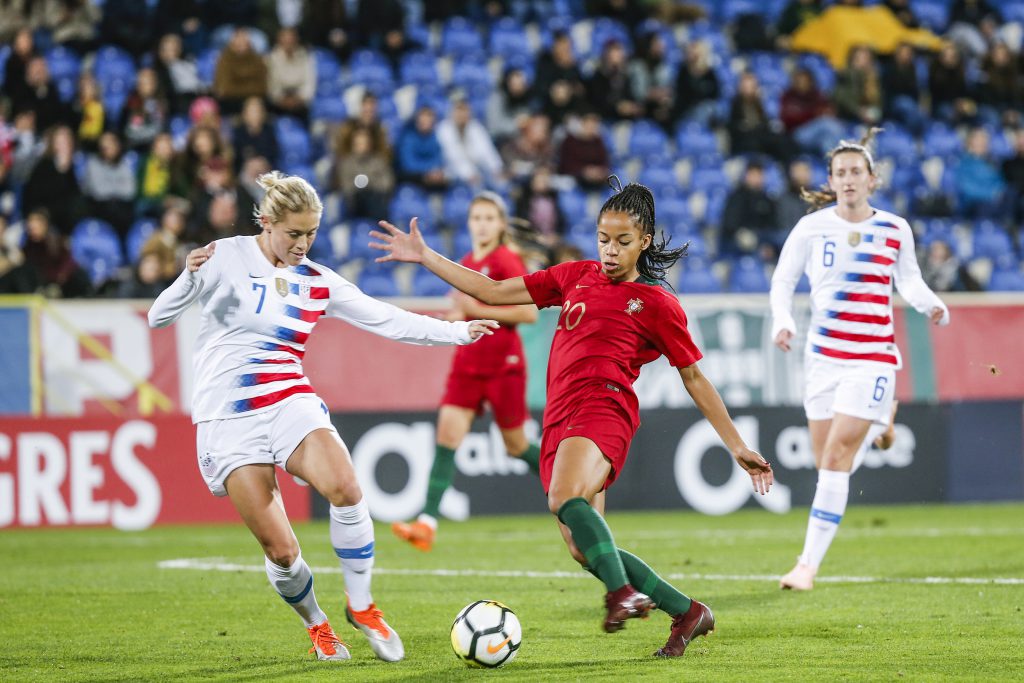The importance of being aware of colour blindness
“Why is colour blindness in sport relevant? Don’t teams already wear different colours?”
The issue of colour blindness in sport is much bigger than kit clashes since it concerns not only spectators but also players, coaches and various other stakeholders. Problems related to colour blindness are not limited to elite sport, as many barriers are also present in grassroots sport. Not taking colour blindness into account can have an impact on the performance of a player or spoil the enjoyment of watching live sports.
The partners of the #TACBIS project (funded by @EuSport) are proud to support #ColourBlindAwarenessDay 2020 @colourblindorg @EFDN_Tweets @footballiceland @selecaoportugal @Randers_FC @hai_romania @oxford_brookes @UEFA @FA. Please 👀 & RT our animation 👇
— TACBIS (@TACBISproject) September 6, 2020
#1in12men #1in200women pic.twitter.com/qkIk1uDwho
It also has commercial implications where colour blind people turn their backs on their favourite sport in frustration – when they are unable to purchase tickets and merchandise independently or can’t see sponsors’ logos or advertising information. Colour blind people are not an insignificant minority. Colour blindness affects approximately 40 million people with colour blindness within the UEFA confederation area and over 300 million people worldwide are affected. In addition to the enjoyment of the match whether as a player or spectator, there are also safety issues to consider. In case of a security alert in a stadium, all spectators must be able to easily spot safety information.
The negative consequences of ignoring colour blindness don’t only arise for individuals but also for clubs, associations and leagues as players affected by the condition cannot access the game properly.
Fortunately, there are organisations and resources available that provide opportunities for assisting and including those with colour blindness in sport with simple measures that, most of the time, only need a little goodwill and forward planning. You can find our tips for organisations and coaches here.
Examples
Liverpool vs Manchester United is one of the most viewed fixtures in professional football, with an average TV audience of over half a billion people. A part of this TV audience, 1 in 12 males and 1 in 200 females, would be suffering from Colour Vision Deficiency, or Colour Blindness as it is more commonly known. Considering the magnitude of such an event, it is disappointing to note how many people struggled to differentiate between the two kits that the teams wore during the match on 17.01.2021.
From today, @SkySportsNews . Hope the club directors are watching! pic.twitter.com/MdpNxHuoVA
— ColourBlindAwareness 🇺🇦 🌻 (@colourblindorg) January 19, 2021
Colour Blind Awareness (CBA), says it received hundreds of complaints after Sunday’s match, an unprecedented number.
“We regularly receive complaints from TV viewers who can’t tell the jerseys apart. Recently at Southampton against Sheffield United, there were already a lot of complaints but that was topped by Liverpool against Manchester United. We spent the whole morning on Monday collecting all the messages.”
Kathryn Albany-Ward, CEO of CBA, on ESPN
According to ESPN and CBA, the Premier League uses computer software to ensure that all fixtures are played with clubs wearing identifiably different colours and has recently been updated to include a “colour blind friendly flag” to ascertain the best kit combinations for individuals who are colour-blind.
"It drives me mad. The fact they know there is a kit clash and it still happens is just not acceptable."
— FootballJOE (@FootballJOE) February 16, 2021
Football is failing colour blind fans, but it can be easily remedied. This is how. pic.twitter.com/0QAac9JI6s
Consequently, Manchester United adjusted their kit by only exchanging their green socks for white ones after receiving a warning by the Premier League ten days before the match. Of course, the solution was insufficient. It was also unusual since United had been wearing a white-and-black kit for the majority of games this season whenever their red shirts clashed with the home team.


